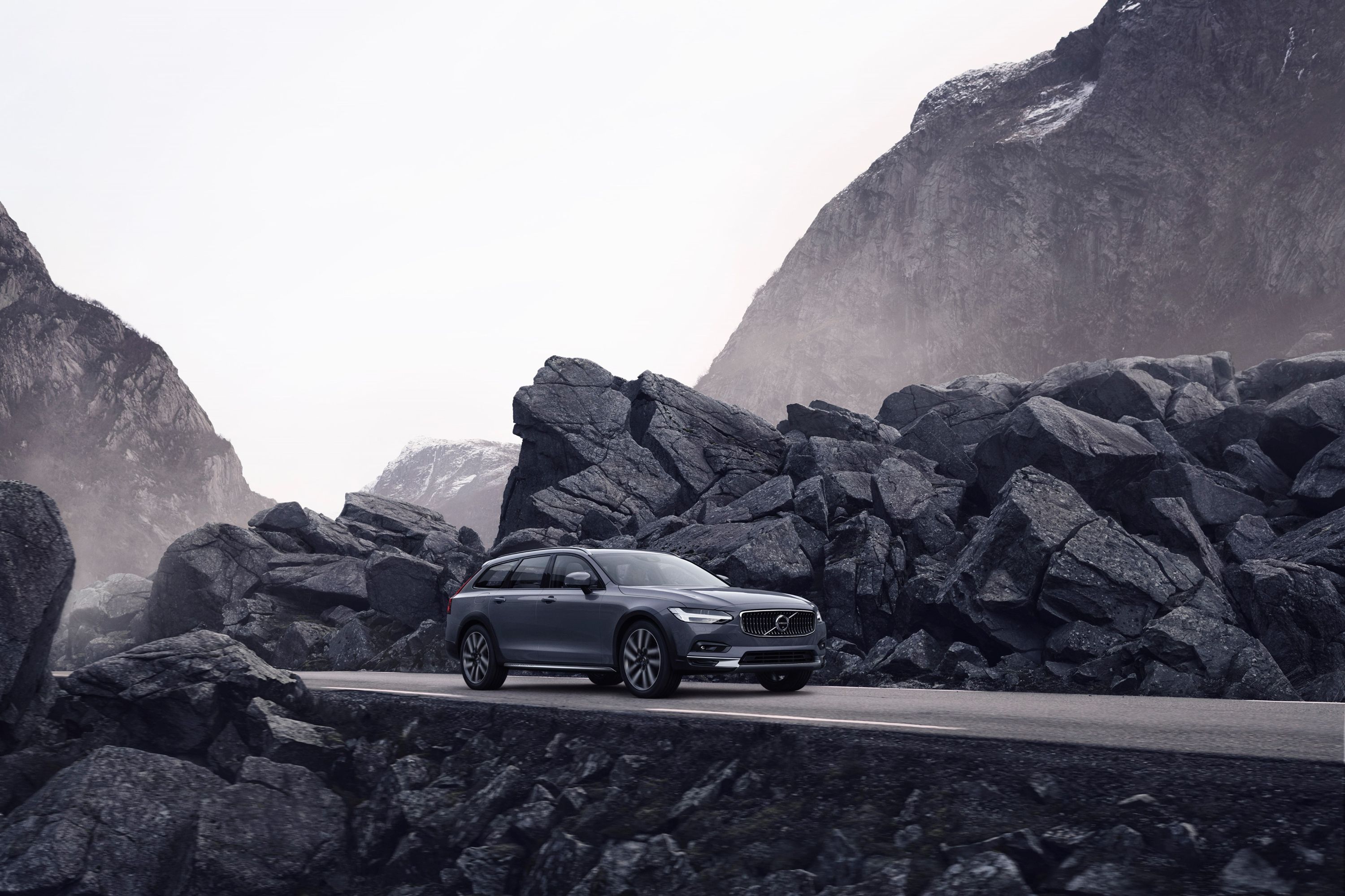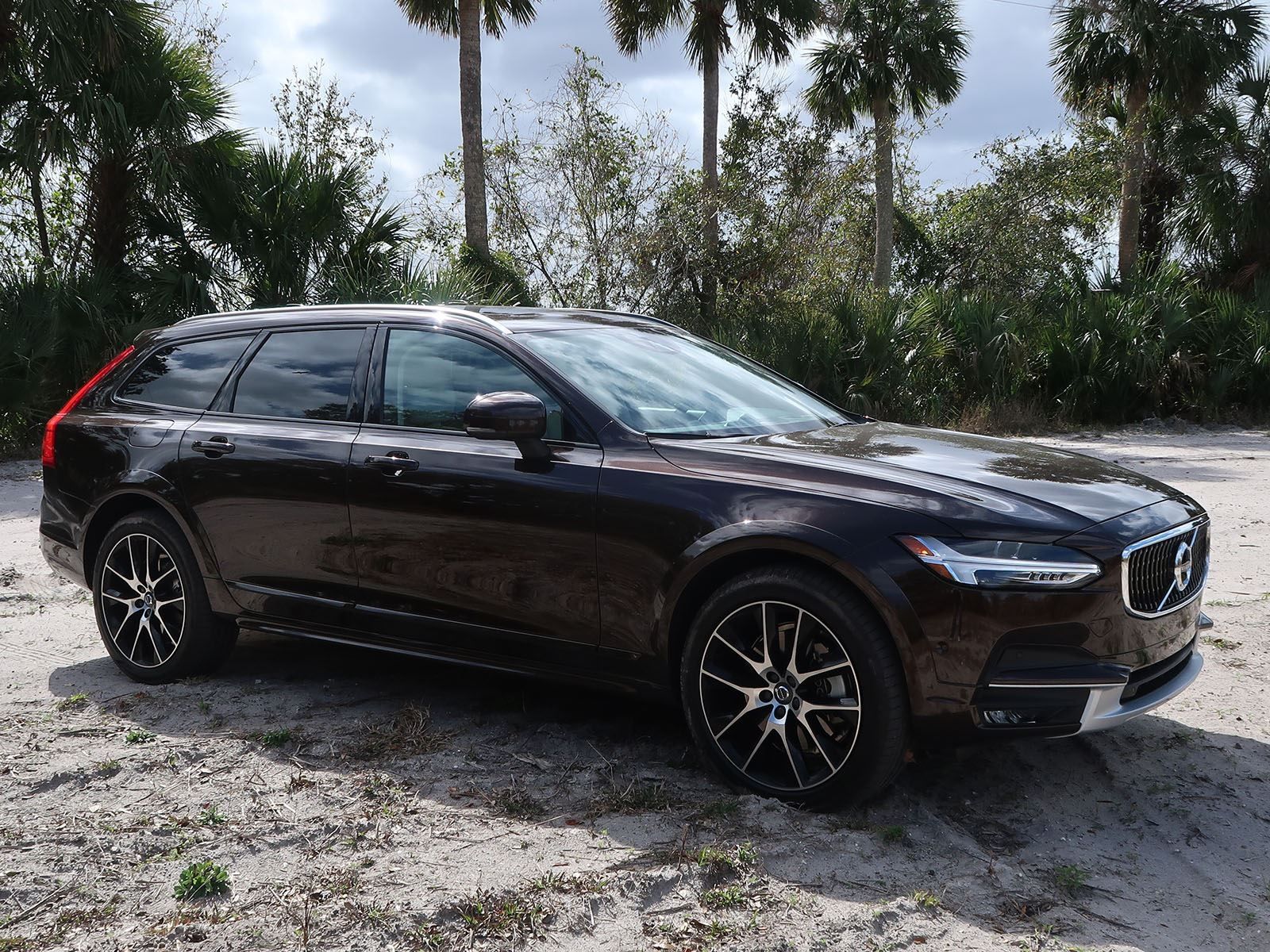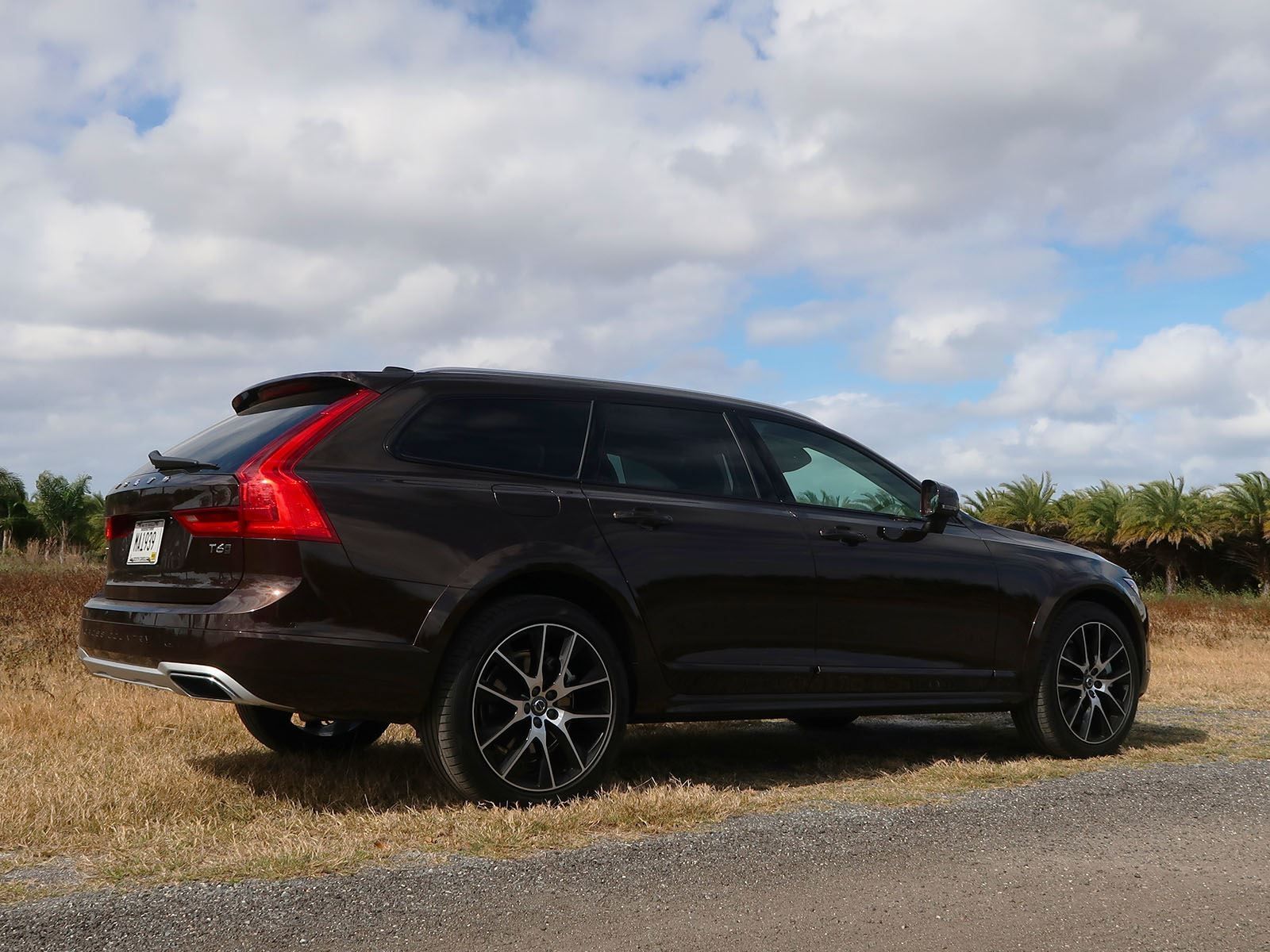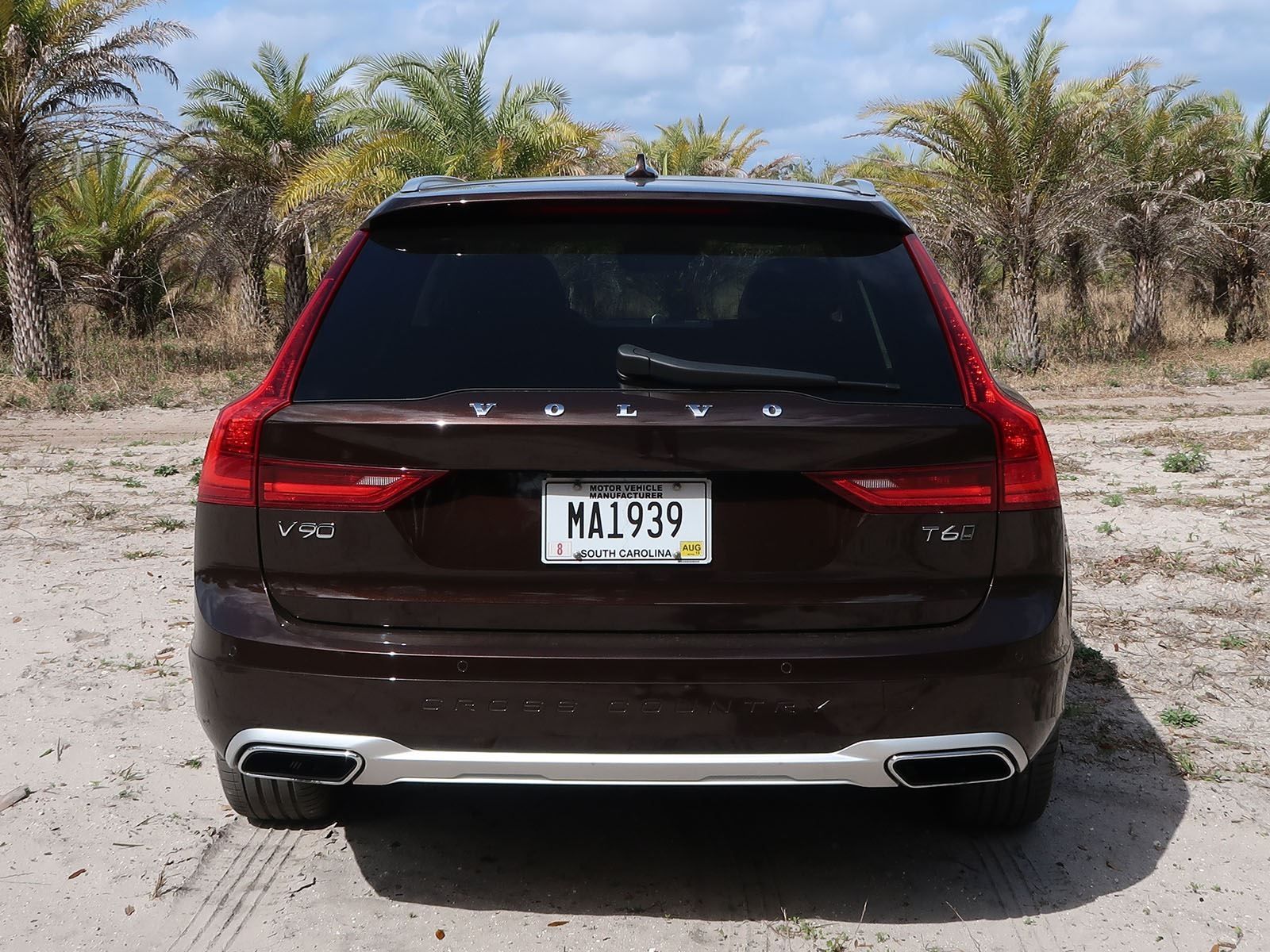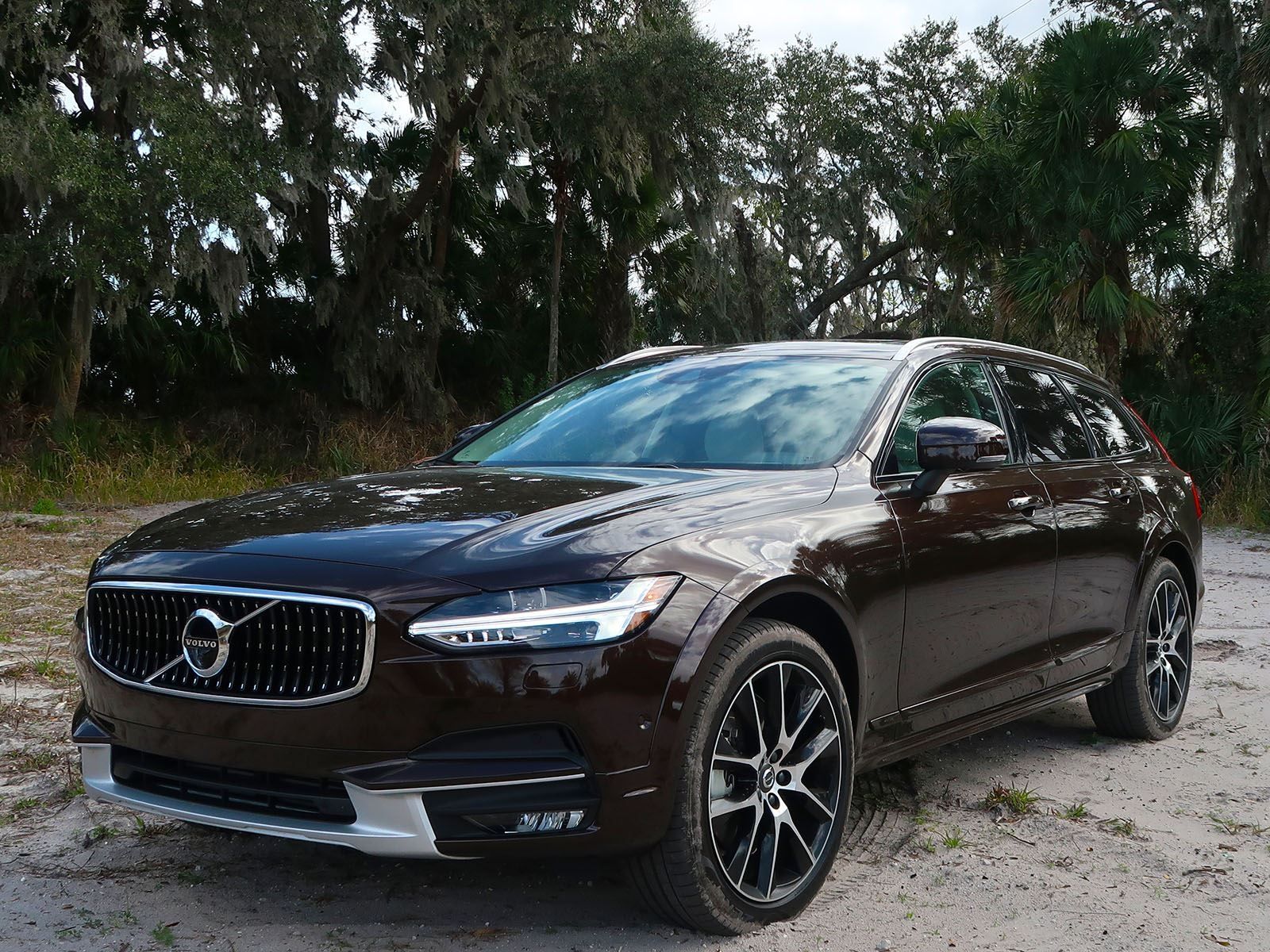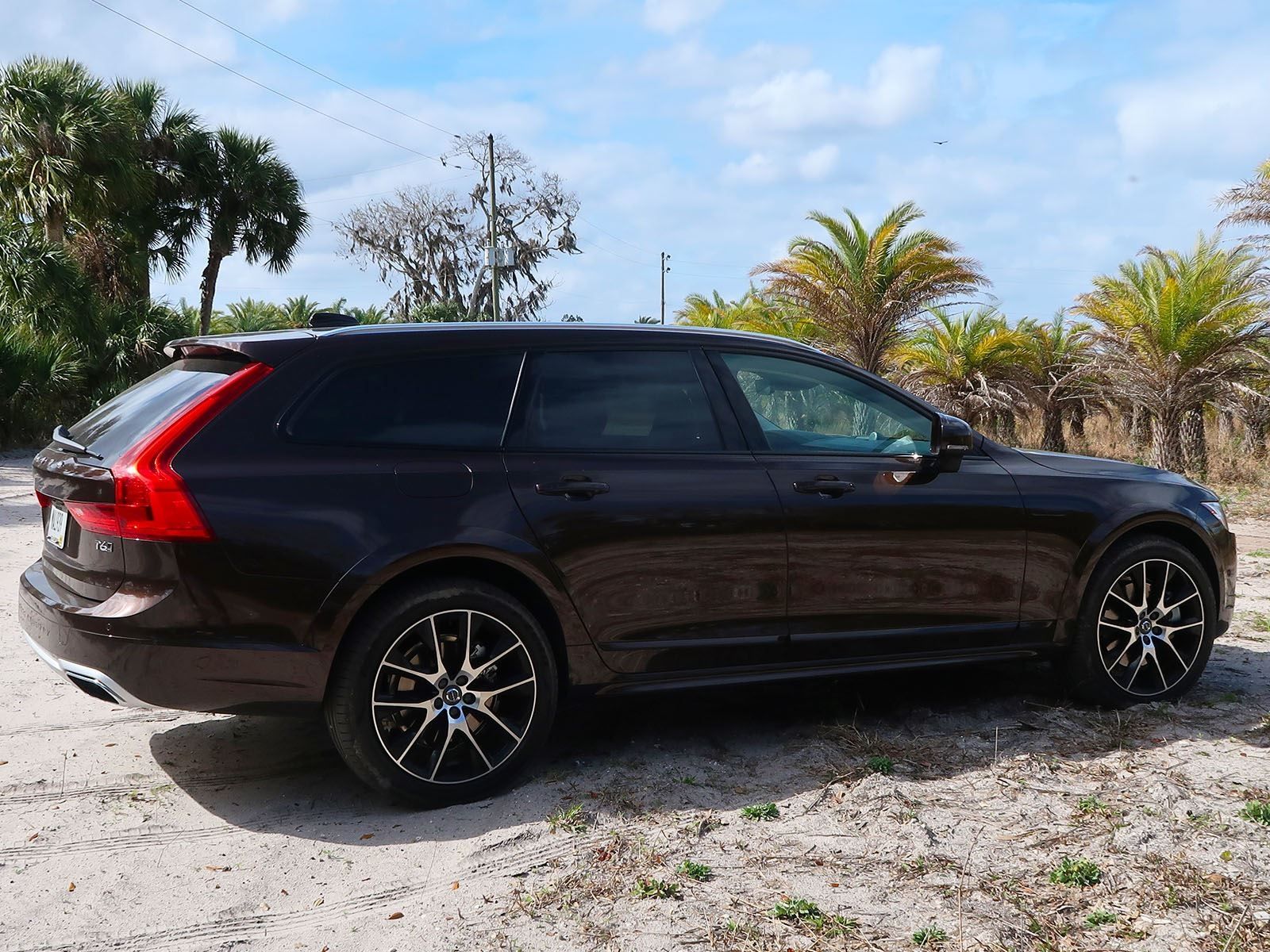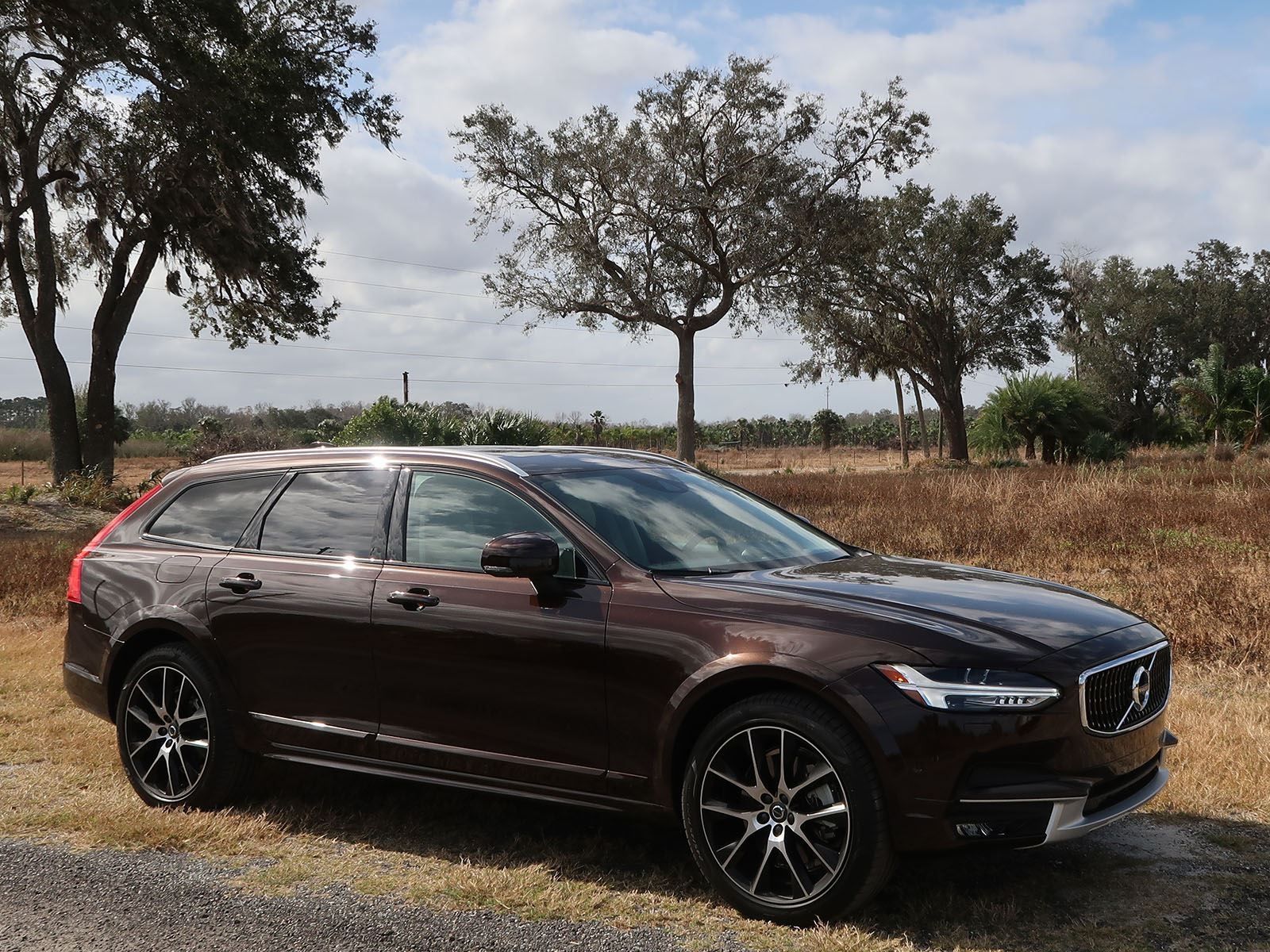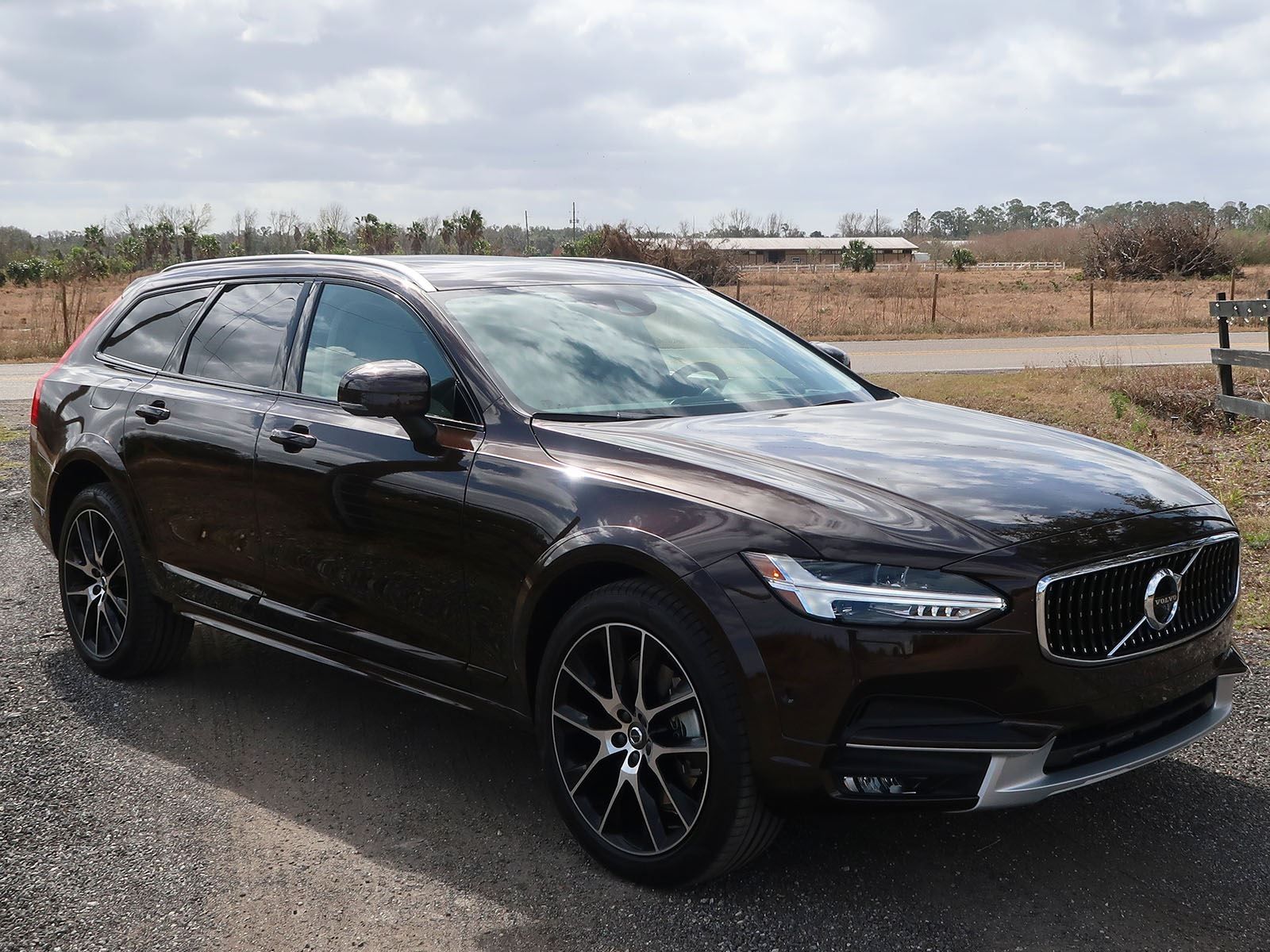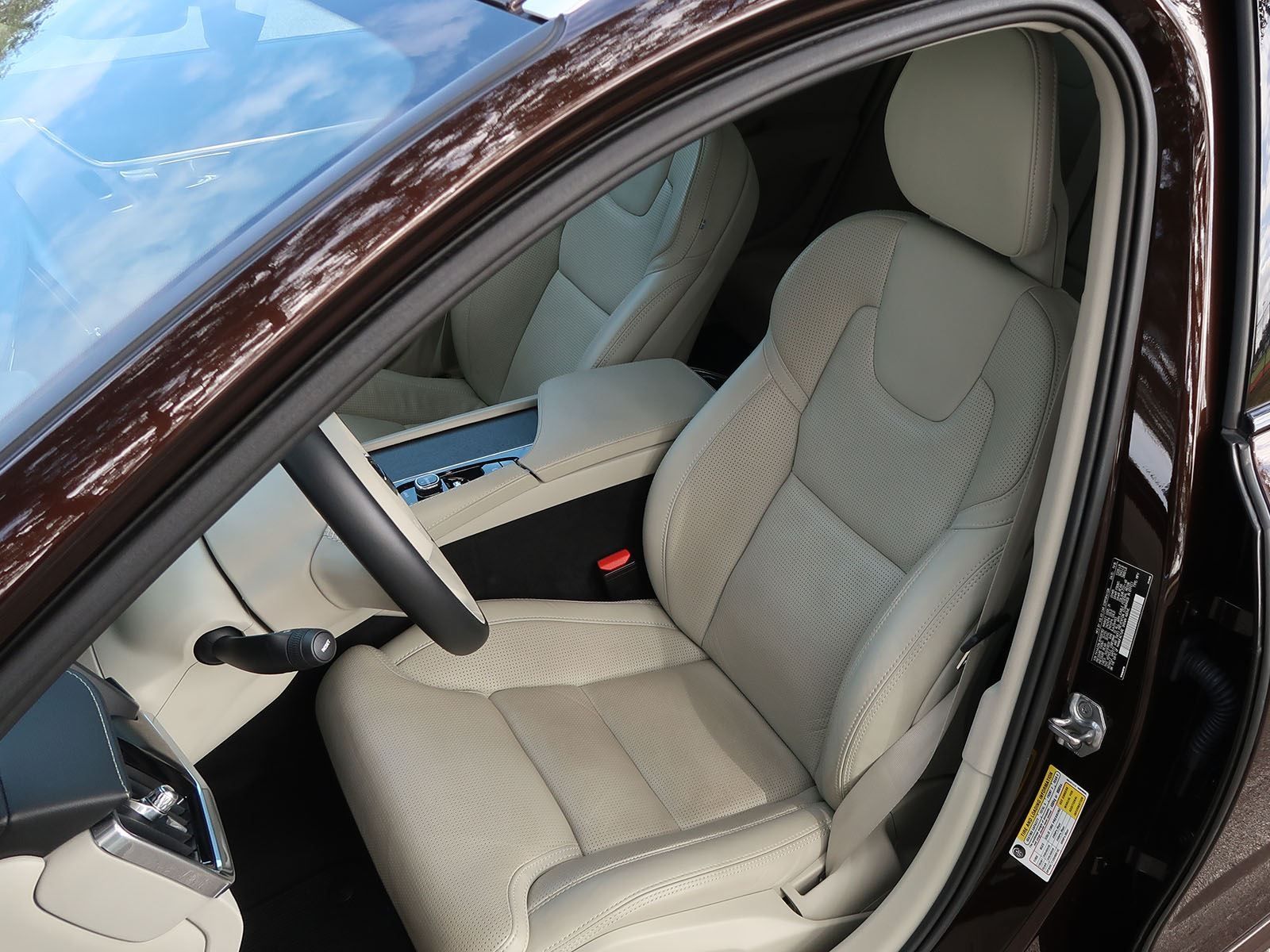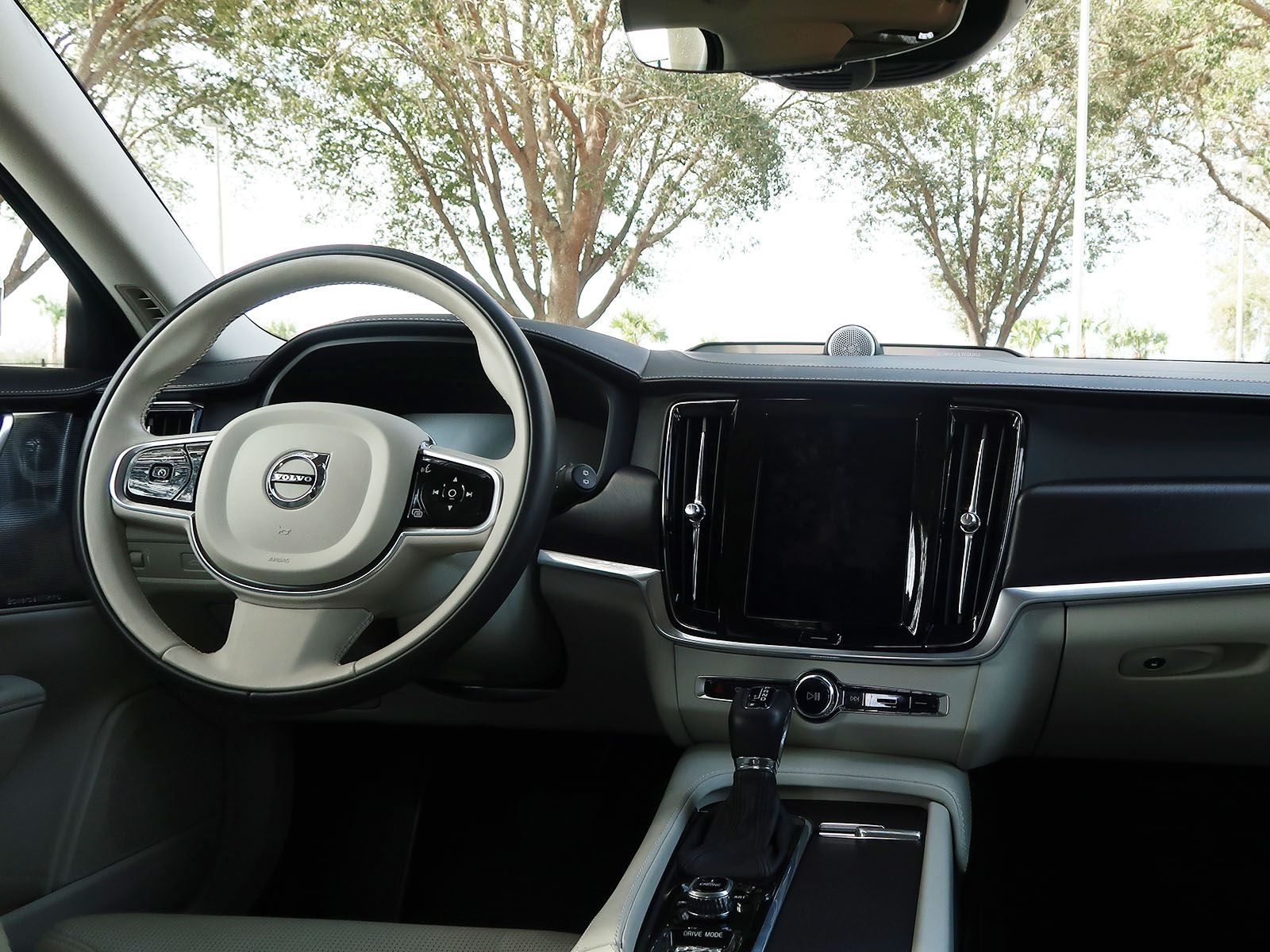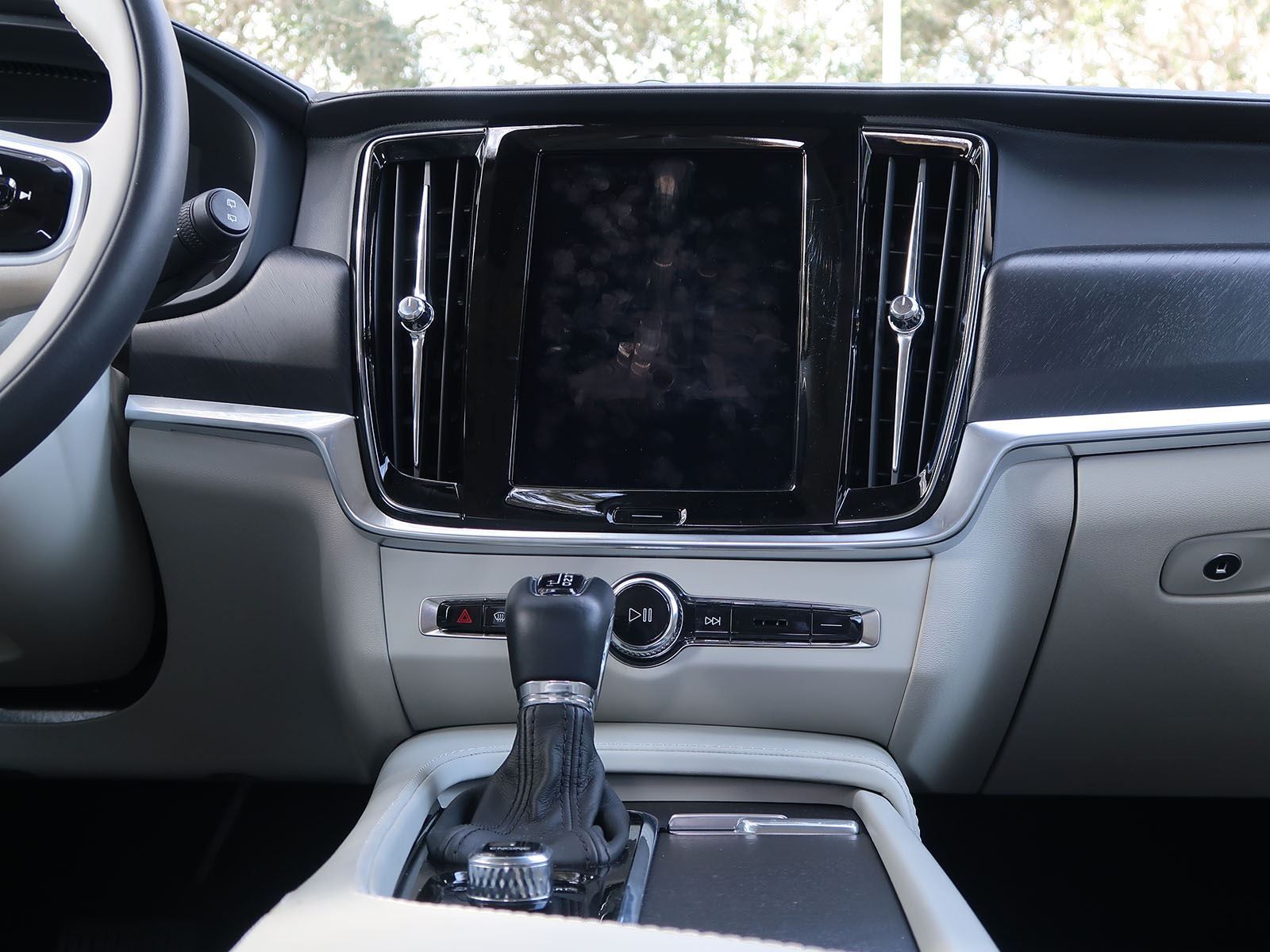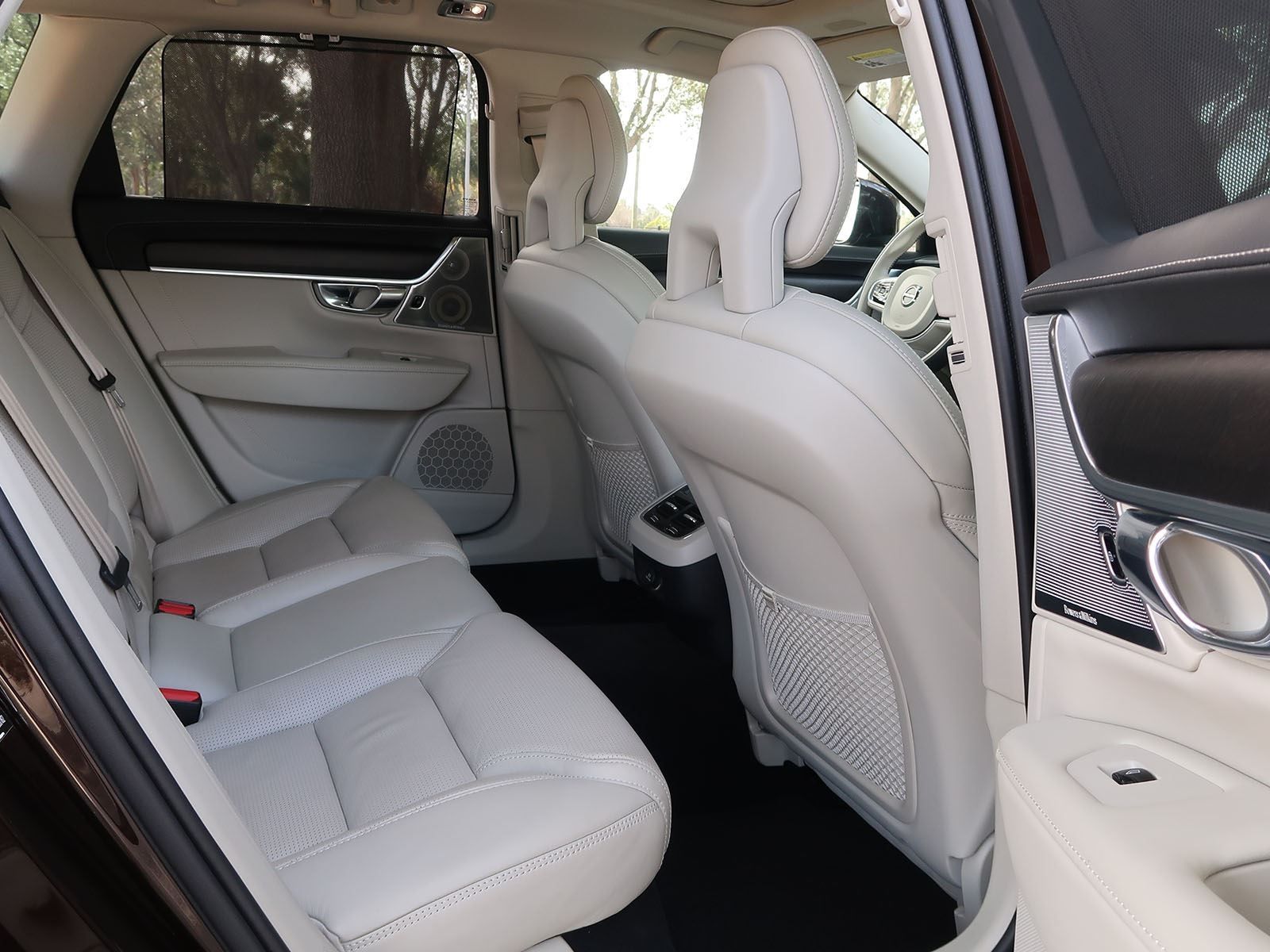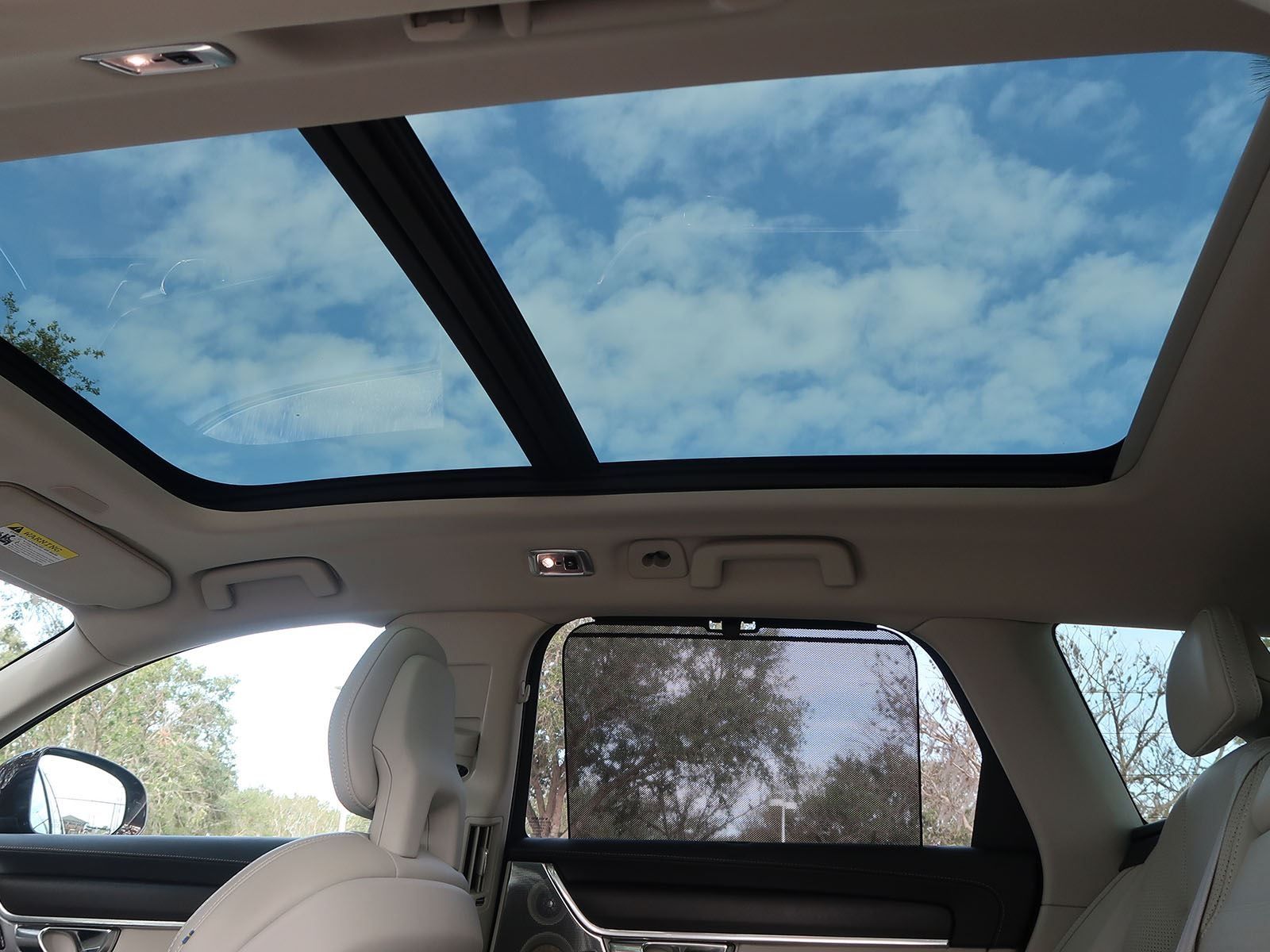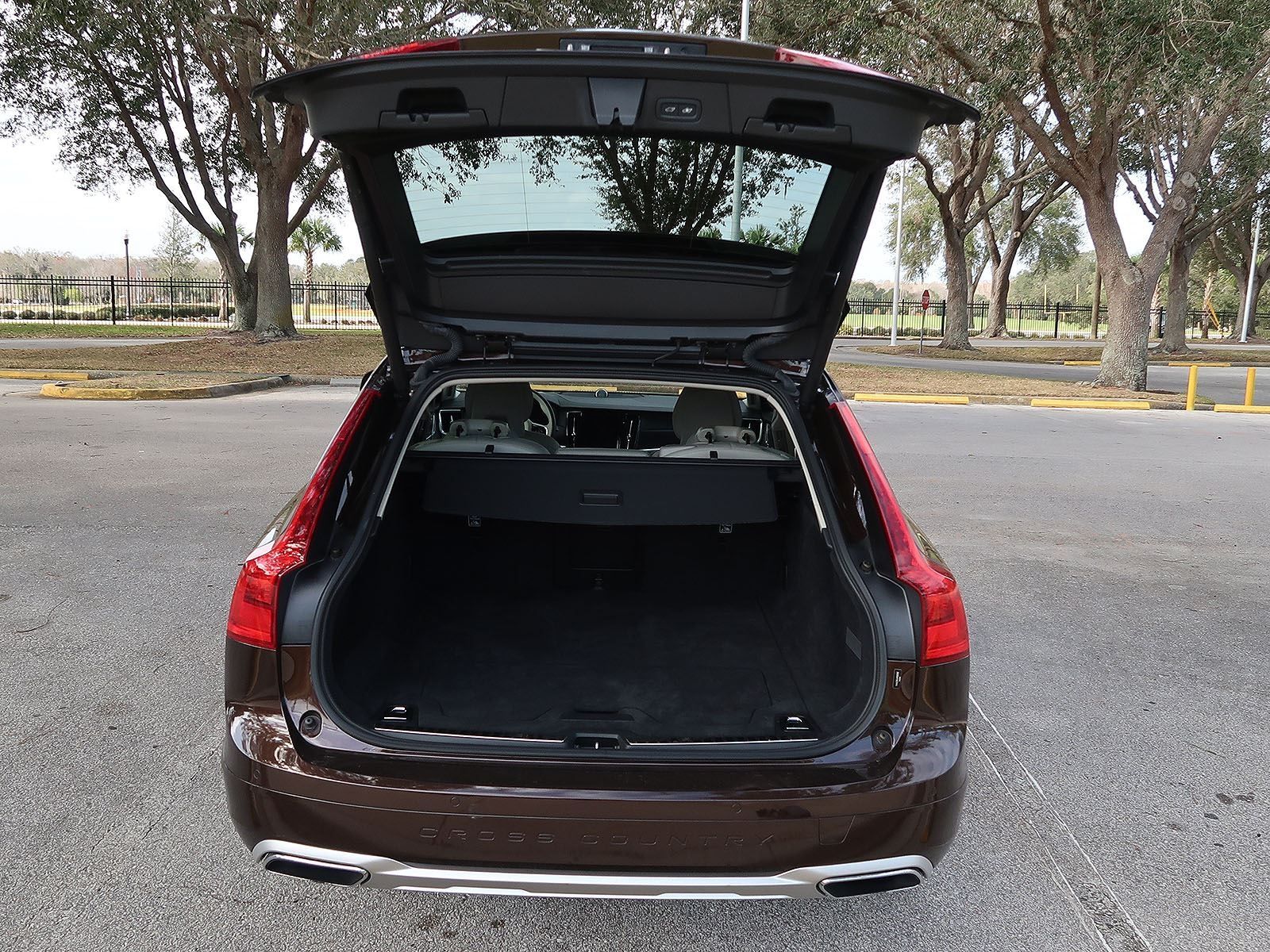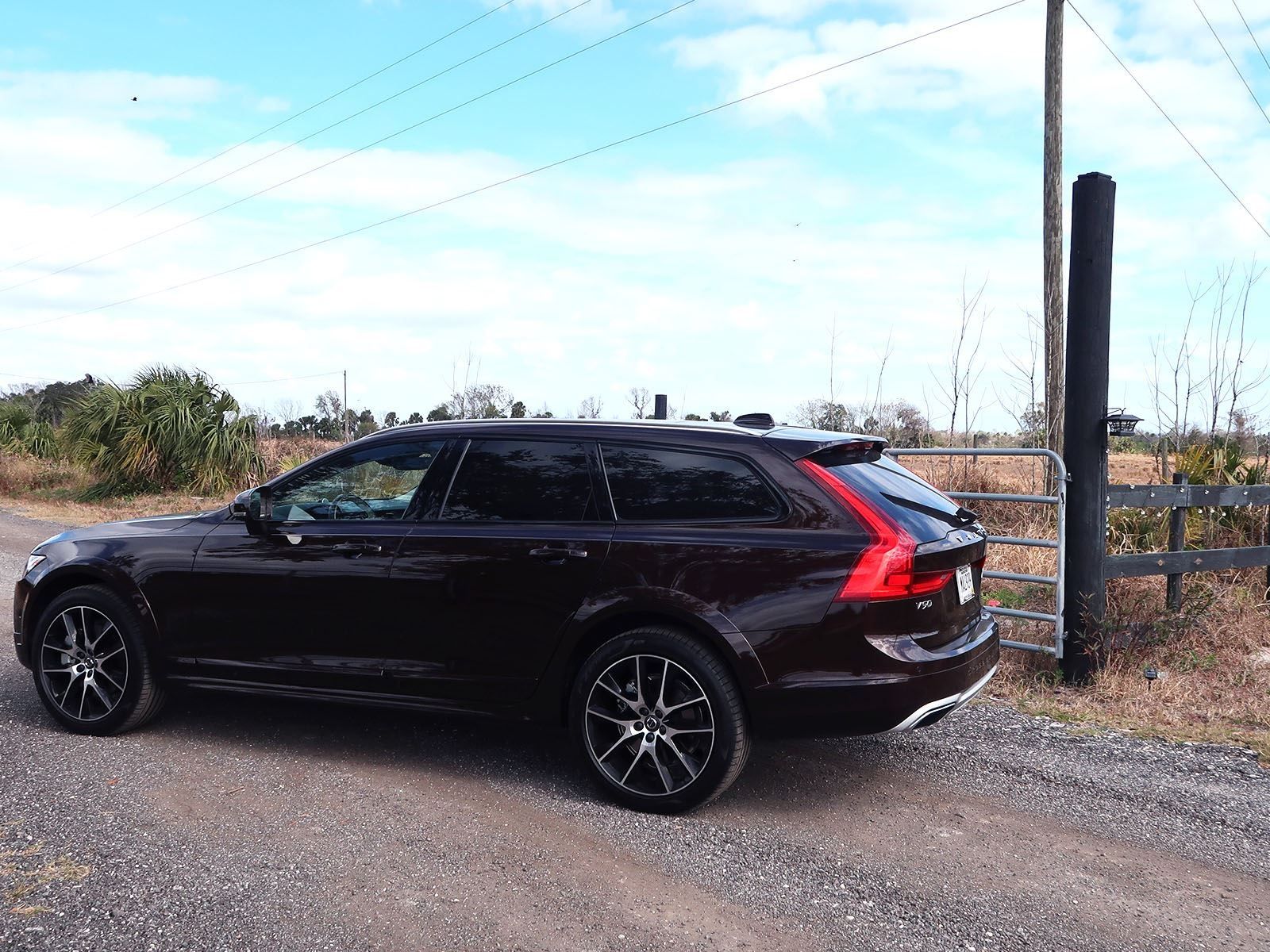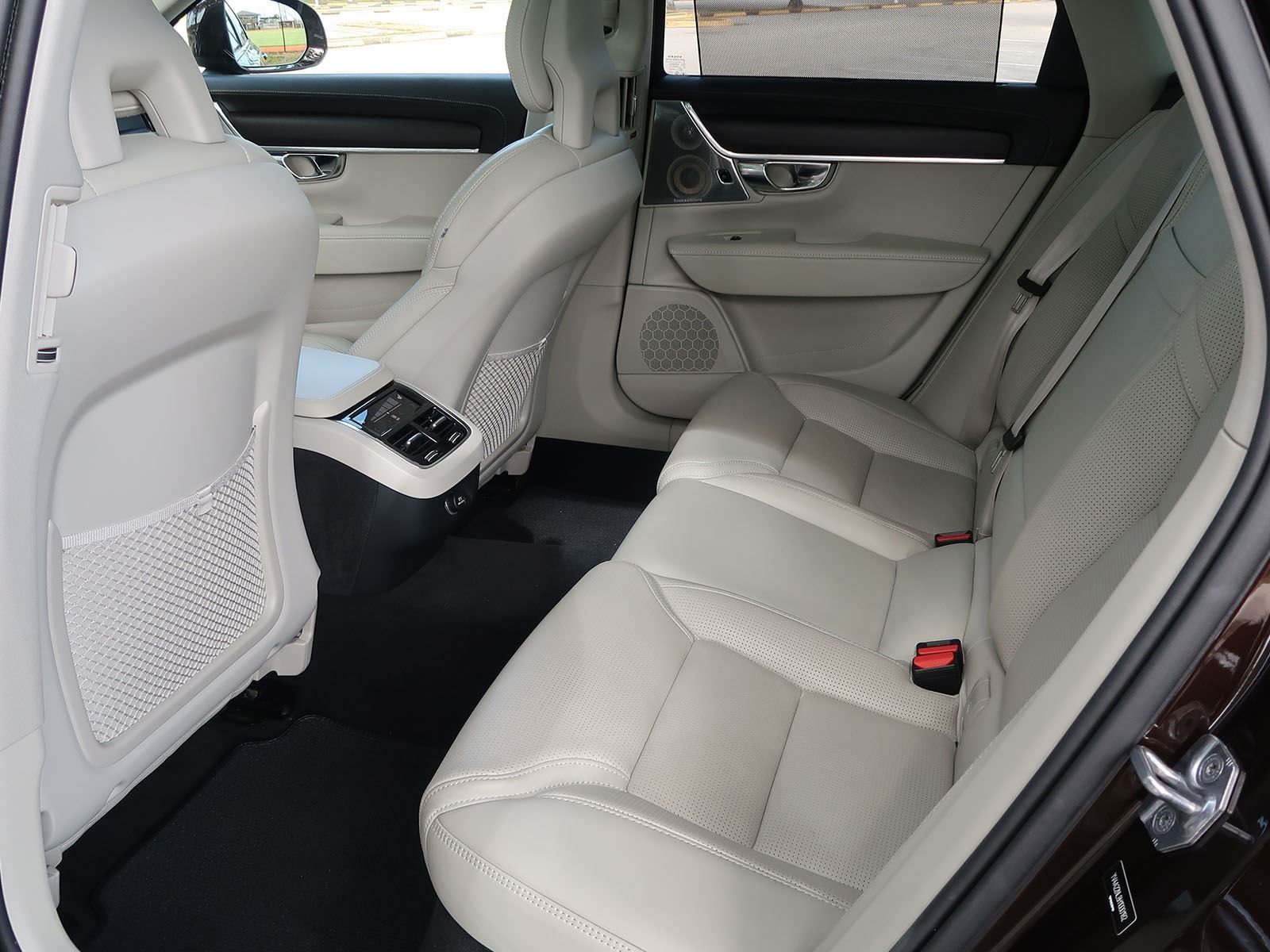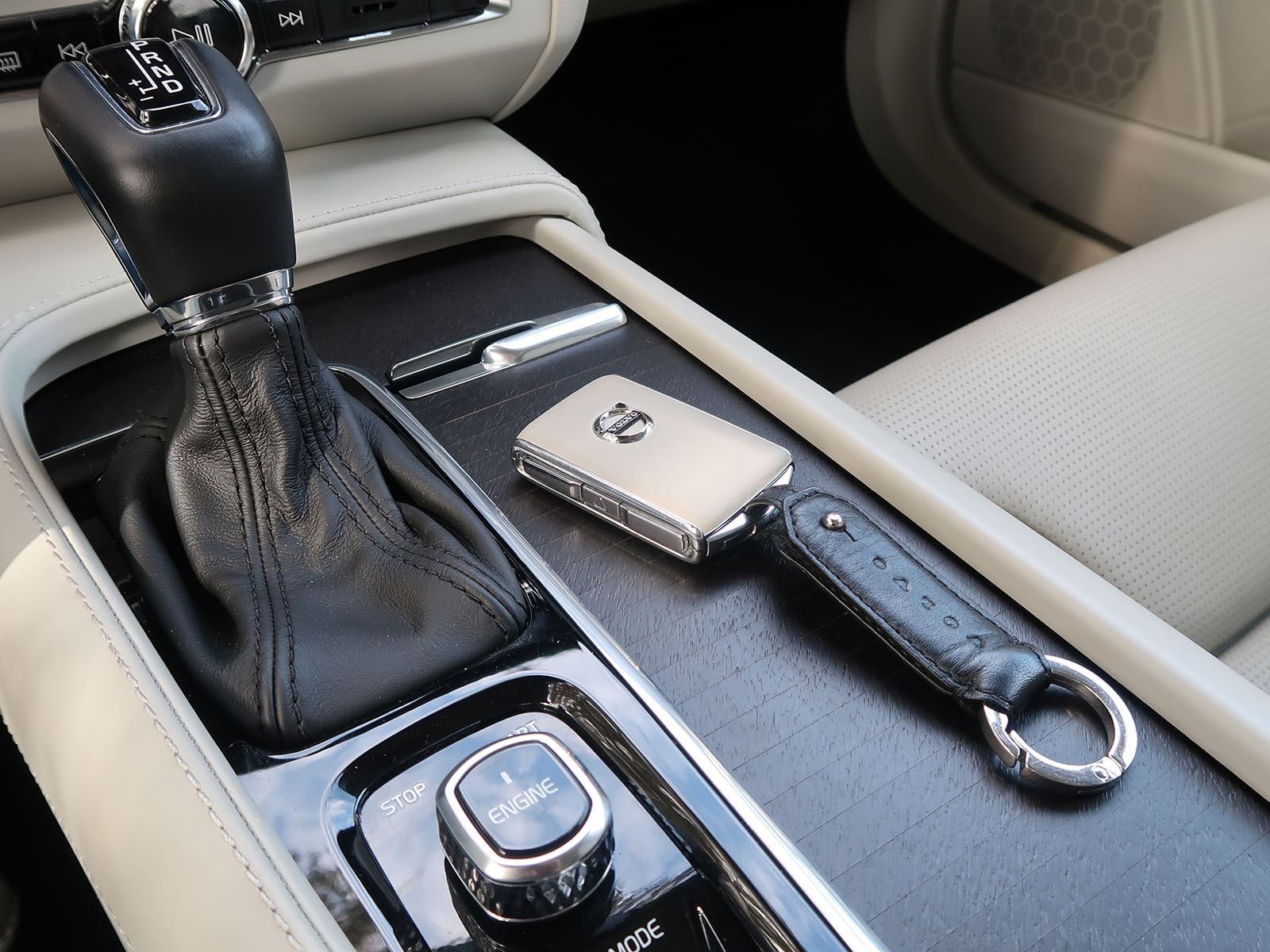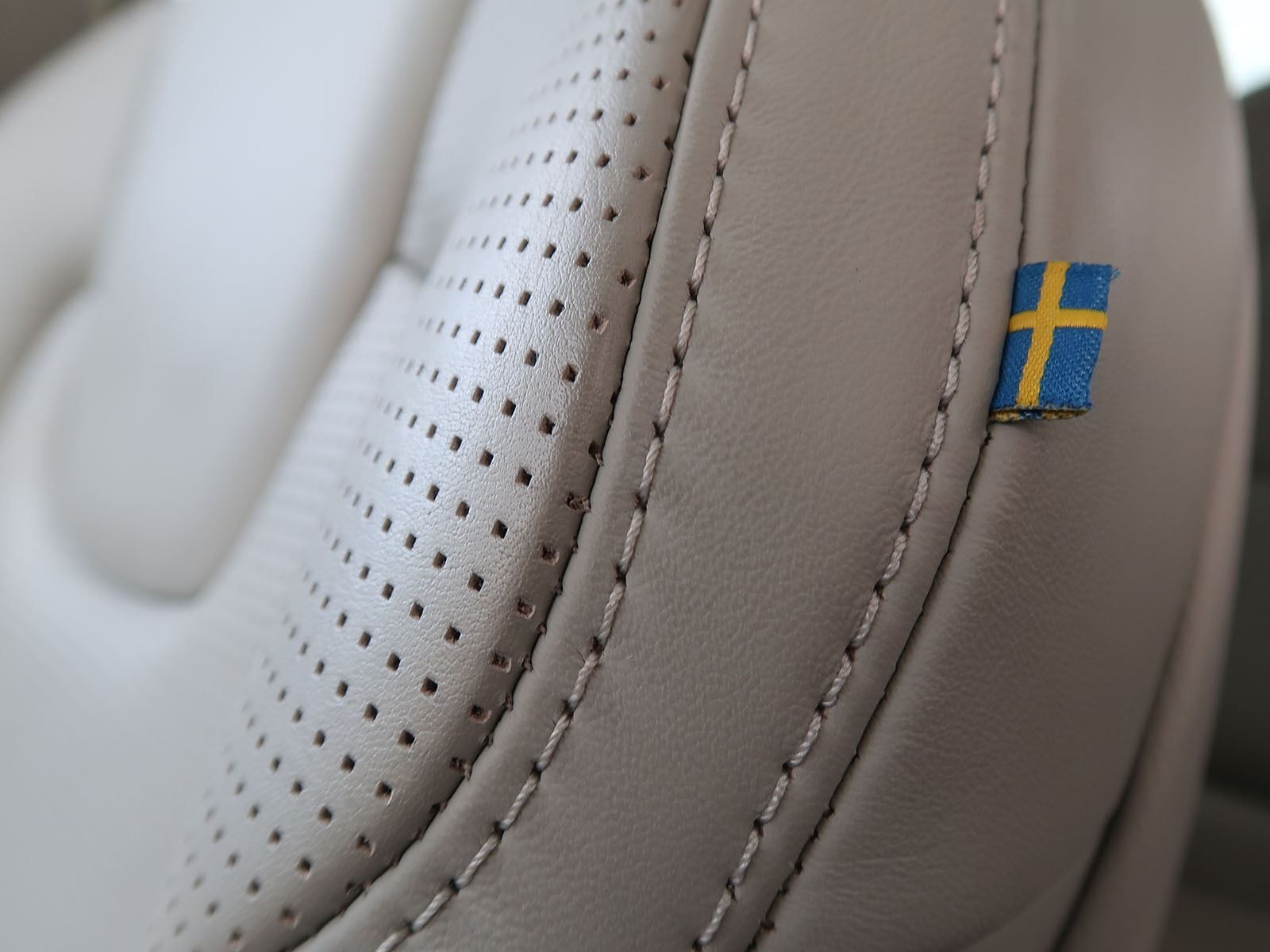2017 Volvo V90 Cross Country Test Drive Review: Our Love Of Wagons Has Never Been Stronger
We've always made clear our preference for wagons over SUVs and crossovers. Unfortunately, the rest of the buying public seems to disagree with our opinion as crossovers have taken over like wild fire. Still, there are a few manufacturers willing to indulge our passion for wagons. That's why we were more amped than usual when Volvo loaned us a 2017 V90 Cross Country T6 AWD to drive for a week. Before we talk about the V90, we need to mention what makes wagons like this so special for American buyers.
The 2017 Volvo V90 wagon without the Cross Country apparel has a starting price of $49,950 and just two direct competitors: the much more expensive Mercedes-Benz E-Class Wagon ($63,050) and the Jaguar XF Sportbrake ($70,450). The Mercedes and Jaguar both offer larger, more powerful 3.0-liter six-cylinder engines, so they may be better bets if you're seeking a sportier driving experience. Other indirect competitors include the Audi A4 Allroad, Buick Regal TourX, and BMW 3 Series wagon, all of which reside in class below the V90. Clearly the wagon segment isn't a crowded house.
With that out of the way, the Cross Country version of the V90 is a bit of an oddball even amongst its peers. With it, Volvo is looking to reach out to intenders who prefer to swim against the current, consumers who want all the trappings offered by a luxury crossover without the perceived stigma of buying the same vehicle as everyone else. The V90 Cross Country sports an elevated 8.3-inch ground clearance; 2.3-inches more than a standard V90 and the same amount as a Ford Explorer. This allows the V90 Cross Country to be more usable in the rough stuff, but also gives it a floaty, SUV-like ride, like it or not.
If you don't live in a northern climate nor have any need for the extra ride height, we suggest you pocket the roughly $2,300 premium you'll pay for the Cross Country over the standard V90 wagon. In addition to the savings, the lighter, more planted V90 wagon will reward you with a 0.2-second quicker sprint from naught to 60 mph versus the 4,000-pound Cross Country, which does the same run in 6.0 seconds with the T6 AWD powertrain. The V90 Cross Country typically comes with body cladding, a designation of its off-road credentials. But our tester came optioned with a $4,500 luxury package that includes body-colored panels, a look we much prefer.
That package also brings massaging Nappa leather seats, a power liftgate, four-zone climate control, heated rear seats, rear sunshades, and a few other interior upgrades to this already well-equipped wagon. Our tester was additionally optioned with a $1,950 convenience package, which adds Homelink, self-parking, heated windshield washer nozzles, a 360-degree camera, rearview-mounted digital compass, and a nifty grocery bag holder in the trunk. In all, our tester rang the cash register at $69,440, not a small number by any stretch and a far cry from the base Cross Country's $52,300 sticker price. The entry T5 model is powered by a 2.0-liter four-cylinder turbo engine with 250 horsepower and 258 lb-ft of torque.
The Cross Country T6 adds a supercharger to the turbo party to produce 316 hp and 295 lb-ft of torque in exchange for $56,100. Both engines send power to all four wheels through an eight-speed automatic transmission. We loved the smooth passing power of the V90 Cross Country's T6 engine, but the point of this car isn't to be sporty and it doesn't imprint a memorable mechanical song on one's mind. The T6 returns fuel economy of 22 mpg city and 29 highway. The lesser T5 model only betters these figures by 1 mpg in the city and 2 mpg on the highway. Truth be told, if we had to save money somewhere, we wouldn't mind stepping down to the lesser T5 powertrain.
Those solid fuel economy figures for both engines are aided by a stop-start system, which is the smoothest example we've ever tested on a non-hybrid car. It seems every other luxury manufacturer these days comes to a similar last-minute determination regarding its consumers' perceived wants for a sporty driving experience. We've sighed upon finding sport buttons that will rarely be pushed, paddle shifters that will never be grabbed in anger. Thankfully, Volvo has taken a unique approach to luxury that almost no other automaker replicates. The V90 does have a performance drive mode, but it's buried in the menu of a rotating drive mode selector.
Instead of trying to build some kind of half-hearted M5 competitor, Volvo completely ignored the word "sporty" to build what may be one of the most laid back, luxurious cars you can drive today. The V90 Cross Country's steering is light and a bit vague, but it isn't quite as dull as that of the Lexus ES 350. We're glad to sacrifice some sportier driving characteristics in exchange for the V90's ride comfort, which glided over rough bumps like a marshmallow on an air hockey table. Ride comfort is further improved by an optional rear air suspension option for $1,200. If the comfortable ride wasn't enough, Volvo designed what we will boldly call the most comfortable seats to ever make contact with our backsides.
The 10-way power-adjustable thrones with four-way lumbar support have no pressure points and coddle you in easy-riding bliss. Equipped with the optional luxury package, our tester's seats were further enhanced with heating, ventilation, and massage functions. Massaging seats in cars are normally a disappointing feature, but these were a standout. We often arrived at our destinations not wanting to get out of the car as we'd have to prematurely end our mobile Swedish massage sessions. Volvo has been making safety sexy for decades.
The V90 comes with a raft of driver assistance features as standard that are typically optional kit from other luxury brands. If you think of a safety option you have on your car, it probably exists on the Volvo in its base models. Not only does this car have all of the safety options one might expect, such as blind spot monitoring, lane departure warning, and adaptive cruise control, it can also combine these features with a system Volvo calls Pilot Assist. As it maintains a set distance from the car in front, the V90 also steers itself, not unlike Tesla's AutoPilot. Another characteristic those two systems share is that neither are foolproof.
The Pilot Assist system couldn't cope with quickly approaching sharp turns and it sometimes lost track of the road lines it relies on for immediate navigation duties. That's likely why Volvo requires the driver to hold onto the steering wheel to keep the system active. Pilot Assist acts like a driver's ed car with a second steering wheel for the teacher, an omnipresent force tugging at the wheel to keep the car between the lines. This isn't full self-driving, but the assist made our daily commute a more pleasurable experience. Pilot Assist works best on straight highways where the system doesn't need to turn as much and can keep better track of the lines.
With Pilot Assist engaged, the driver can relax in the massaging seat on long journeys and soak in all that the Volvo has to offer. Volvo's Sensus 9.0-inch touchscreen infotainment system-which comes with the obligatory Apple CarPlay and Android Auto add-ons-basically controls the entire car, with only radio and defroster controls available in physical form. While Sensus does take some getting used to due to its portrait orientation, it's incredibly responsive and one of the most user-friendly systems on the market today. But no infotainment system is perfect and we have two main gripes about Volvo's.
First, we wish there were a few more physical buttons; we liked having the radio controls handy on the dashboard and steering wheel, but we'd also appreciate duplicate climate controls. The other problem we discovered was the system was incredibly slow and laggy when it first booted up. It worked perfectly after we gave it a moment to catch up with itself, but this could get annoying for someone who was hopping in and out of the car frequently to run errands. For example, the massaging seats needed to be reactivated each time the car was turned off and back on again, so we often had to wait for Sensus to get back to normal operating speed before we could resume our massage.
Volvo has some of the best light leather interiors on the market. Our tester came with blond perforated leather with dark walnut wood trim. We aren't sure if the wood was real, but it certainly felt like it could be. Volvo leaves the wood unfinished so it feels slightly rough to the touch. This gives the vehicle a natural feel that most luxury cars can't match. The interior was brightened up even more with the V90 Cross Country's massive panoramic moonroof. Our tester included the optional Bowers and Wilkins sound system for $3,200. This may sound like a lot for a stereo, but it's very affordable compared to what Audi, BMW and Porsche charge for their high-end systems.
The standard sound system has 10-speakers, but the B&W system bumps that up to 19-speakers with a 12-channel amp and 1,400W of peak output power. Dive into the Sound Experience icon on the central screen and the sound gets even better. The system has three modes in addition to the standard tone and balance adjustments that you'd find in a normal system. The Studio Mode sends sound to different parts of the car so it can be finely tuned for the driver, rear seats, or the whole car. The Individual Stage Mode can adjust intensity and envelopment, which makes music more immersive. The final mode is the Concert Hall Mode, which was our personal favorite.
Volvo visited the Gothenburg Concert Hall, home to the Gothenburg Symphony Orchestra in the company's home town, to develop this piece of aural magic. We found it worked best with rock songs and classical music, but caused talk radio, advertisements, and podcasts to echo. Of course, all of the amazing features found in the V90 can also be had in the S90 sedan and the XC90 SUV, so why would someone want to choose the V90 or V90 Cross Country instead? For starters, the V90 houses more cargo space than the S90 sedan (although not as much as the XC90 SUV) and it has a style we adore.
Unfortunately, most of our occupants throughout the week had trouble getting behind the wagon body style in general. Perhaps it was the Maple Brown Metallic paint, but our non-enthusiast passengers struggled to call this car pretty. Those opinions may have been different if Volvo had sent a XC60 or XC90, but we still love Volvo's current design language. The "Thor's Hammer" headlights look fantastic and we love the V90's powerful yet understated lines. Our time with the V90 showed us that American consumers have all but written off wagons and only enthusiasts seem to want them. But there's hope.
Now that soccer moms are plying the parking lots in gargantuan crossovers, the wagon can be made cool once again. Volvo's efforts to bring the wagon back may not be fruitful, but the V90 showed us the Swedish company's recent resurgence isn't going to end anytime soon. Beyond that, the Cross Country has a lot of standout features that only six-figure cars can match. Most people will opt for the S90 sedan or XC90 SUV, but we love that Volvo will still build a car for the rest of us.

